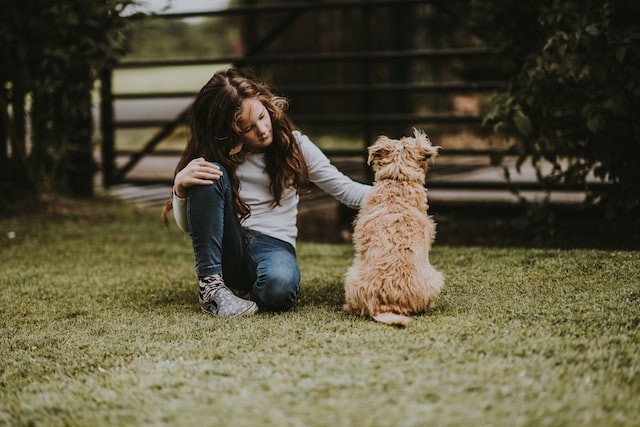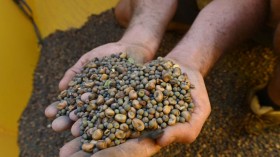Over the previous three decades, the rate at which new animal illnesses infect humans has progressively climbed.
Viruses, such as the worldwide coronavirus pandemic and the current monkeypox epidemic, have highlighted the critical need for disease ecology techniques that can predict when and where disease outbreaks may occur.
New approach predicts disease transmission
 (Photo : Annie Spratt/Unsplash)
(Photo : Annie Spratt/Unsplash)

A University of South Florida associate professor contributed to the development of a system that would forecast disease transmission from animals to people, from one wildlife species to another, and who is at risk of infection, as per ScienceDaily.
The technology is based on machine learning and detects the impact of factors such as geography and climate on recognized diseases.
The algorithm can detect community hot spots at risk of infection on both global and local sizes using only tiny quantities of information.
The study's primary objective is to create this tool for preventative actions, according to co-principal investigator Diego Santiago-Alarcon, an assistant professor of integrative biology at USF.
It is challenging to develop an all-purpose model that can be used to forecast infections across all parasite systems, but this research contributes to that objective.
Santiago-Alarcon examined three host-pathogen systems - avian malaria, birds with West Nile virus, and bats with coronavirus - with the help of researchers from Mexico's Universidad Veracruzana and Instituto de Ecologia to test the reliability and accuracy of the models generated by the methodology.
The researchers discovered that in each of the three systems, the species that was most frequently affected was not always the most vulnerable to the illness.
It was critical to determine significant characteristics, such as environment and evolutionary links, in order to properly locate hosts at increased risk of infection.
The researchers found host species that had previously not been reported as affected by the parasite under study by combining geographic, environmental, and evolutionary development characteristics, giving a technique to detect vulnerable species and eventually minimize disease risk.
"We are sure that the technique is successful and that it can be used to a wide range of host-pathogen systems," according to Santiago-Alarcon. "We are currently entering a period of development and refining."
The findings, published in the Proceedings of the National Academy of Sciences, demonstrated that the technique may generate solid worldwide forecasts for the examined host-pathogen systems even with limited information.
This novel technique will aid in the direction of infectious disease surveillance and field initiatives, giving a cost-effective way for better determining where to allocate scarce illness resources.
Predicting which pathogen will cause the next medical or veterinary illness is difficult but vital.
As the rate of human impact on natural settings grows, so will the chance for new illnesses.
Also Read: Cross-Species Infection: Deadly Diseases Acquired Due to Animal to Human Transmission Explored
Zoonotic diseases
People gain much from animals. Many individuals have everyday interactions with animals, both at home and away from home, as per CDC.
Animals give humans all throughout the world food, fiber, livelihoods, travel, sport, friendship, and education.
Millions of American families have one or more pets. We may come into touch with animals in urban or rural settings, when traveling, attending animal displays, or participating in outdoor activities.
Animals, on the other hand, can carry hazardous bacteria that can transmit to humans and cause illness; these are known as zoonotic illnesses or zoonoses.
Zoonotic illnesses are caused by pathogenic bacteria, viruses, parasites, and fungus.
These viruses may cause a wide range of ailments in humans and animals, from moderate to severe sickness and even death.
Depending on the zoonotic illness, animals may look healthy even though they are harboring germs that might make people sick.
How do germs move between humans and animals?
Coming into touch with an infected animal's saliva, blood, urine, mucus, excrement, or other bodily fluids. Petting or touching animals, as well as bites or scratches, are examples.
Coming into contact with regions where animals reside and wander, as well as germ-infested items or surfaces. Aquarium tank water, pet homes, poultry coops, barns, plants, and soil, as well as pet food and water dishes, are all examples.
What steps can you take to safeguard yourself and your family from zoonotic diseases?
Keep your hands clean. Washing your hands after being near animals, even if you did not touch any of them, is one of the most critical precautions you can take to avoid becoming ill and transmitting germs to others.
Learn the basic steps you can take to keep your pets safe. Prevent mosquito, tick, and flea bites.
Learn how to handle food securely, whether for yourself, your family, your pet, or other animals.
Related article: Mink Workers Infected With Coronavirus First Known Cases of Animal-Human Transmission
© 2024 NatureWorldNews.com All rights reserved. Do not reproduce without permission.





